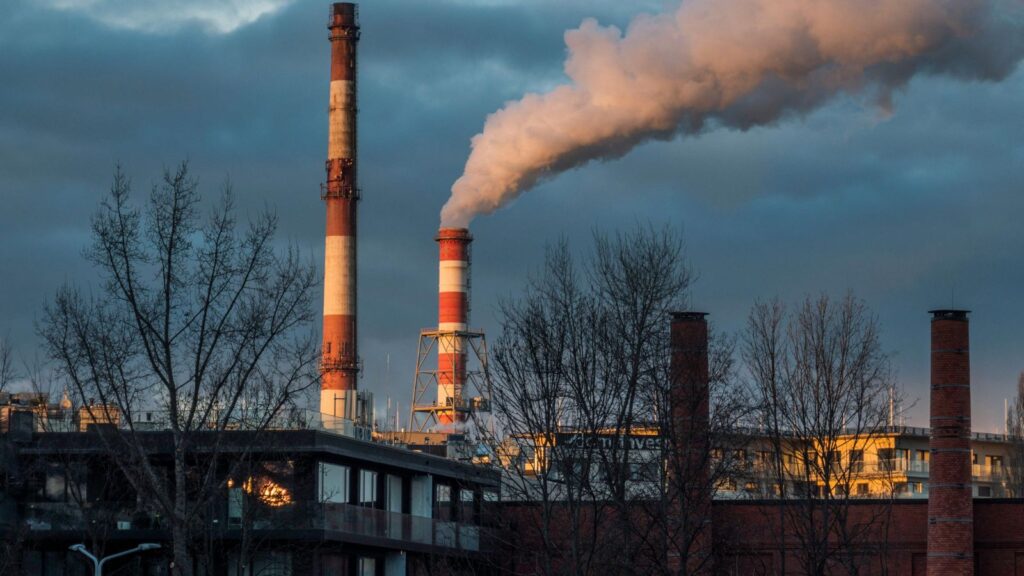Statement by Keith Brooks, Programs Director
Toronto | Traditional territories of the Mississaugas of the Credit, the Anishinaabeg, the Haudenosaunee, and the Huron-Wendat – New data released today by the Government of Canada demonstrates that climate policy has delivered real greenhouse gas (GHG) emissions reductions, bringing Canada one step closer to meeting its climate change targets. The new information shows that in 2021 GHG emissions were over eight per cent lower than in 2005. This reduction in emissions is a critical indicator of climate progress.
However, to reach the federal government’s 2030 climate targets – a 40-45 per cent reduction from 2005 levels – significantly more reductions are needed. While most sectors – including electricity, steel, cement and construction – are successfully driving down emissions, oil and gas and transportation are moving in the wrong direction.
The oil and gas sector continues to be Canada’s largest and fastest growing source of emissions, now accounting for 28 per cent of Canada’s total emissions. Since almost all of Canada’s oil is exported, not included in today’s data are the emissions that come from burning that oil, which are higher than all of Canada’s domestic emissions combined and continue to grow as Canada increases fossil fuel production.
The Government of Canada must deliver on their promise to cap and decrease emissions from the oil and gas industry through strong regulations to hold fossil fuel companies accountable for doing their fair share. Without a robust target for reducing oil and gas emissions at the same levels as the rest of the economy, a greater burden for emission reductions would shift to other sectors, communities and individuals.
According to the data, methane emissions from the oil and gas industry have fallen since 2005. However, the government continues to rely on industry self-reporting, despite independent study after study demonstrating that under-reporting is rampant. We need credible data.
In second place is transportation, which also saw increased emissions from last year, though a reduction from 2005. Notably, emissions from personal vehicles are down from 2005 despite the fact that many more vehicles have been put on the roads. This is thanks to fuel economy regulations and more electric vehicles on the roads. However, for Canada to reach its climate targets, it will be critical for the government to follow through on the Zero Emissions Vehicle sales targets and ensure that 100 per cent of personal vehicle sales are electric by 2035. The increase in emissions from freight vehicles points to a gap in Canada’s GHG emissions reduction plan. Freight emissions will need to be addressed more aggressively if the country aims to reach its overall targets.
Alberta continues to generate more greenhouse gas pollution than any other province in the country, accounting for nearly 40 per cent of Canada’s emissions. And while every other province (other than Manitoba) was able to decrease emissions since 2005, Alberta’s have increased significantly, as a result of more oil and gas production. Yet, Alberta continues to be one of the only provinces without a 2030 climate target.
Ontario’s emissions are far from where the province needs to be to contribute its fair share to meet Canada’s emissions reduction target. As the second largest provincial GHG emitter, Ontario needs to develop a credible plan to significantly decrease emissions, including for buildings, transportation and heavy industry. Ontario must also abandon the plan to build new gas-fired power plants.
By the time Canada’s national greenhouse gas emissions inventory report is published each spring, the data is already 16 months out of date. The Government of Canada must provide more timely and public-friendly data in order to improve policy and decision-making.
2023 is an especially critical year, as the federal government moves ahead with major policies, including the Clean Electricity Regulation, the cap on oil and gas emissions, the sales requirement for zero-emissions vehicles, and stronger methane regulations. And of course, provinces must step up to the plate. We, and the climate, can’t afford any more delays or weak policies.
ABOUT ENVIRONMENTAL DEFENCE (environmentaldefence.ca): Environmental Defence is a leading Canadian environmental advocacy organization that works with government, industry and individuals to defend clean water, a safe climate and healthy communities.
– 30 –
For more information or to request an interview, please contact:
Allen Braude, Environmental Defence, media@environmentaldefence.ca, 416-356-2587







